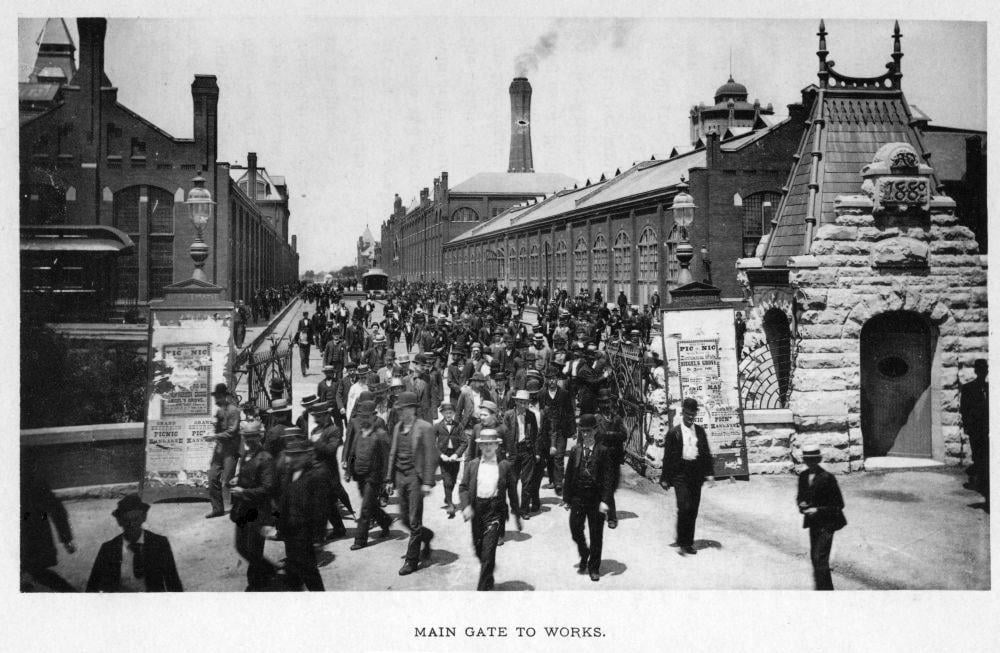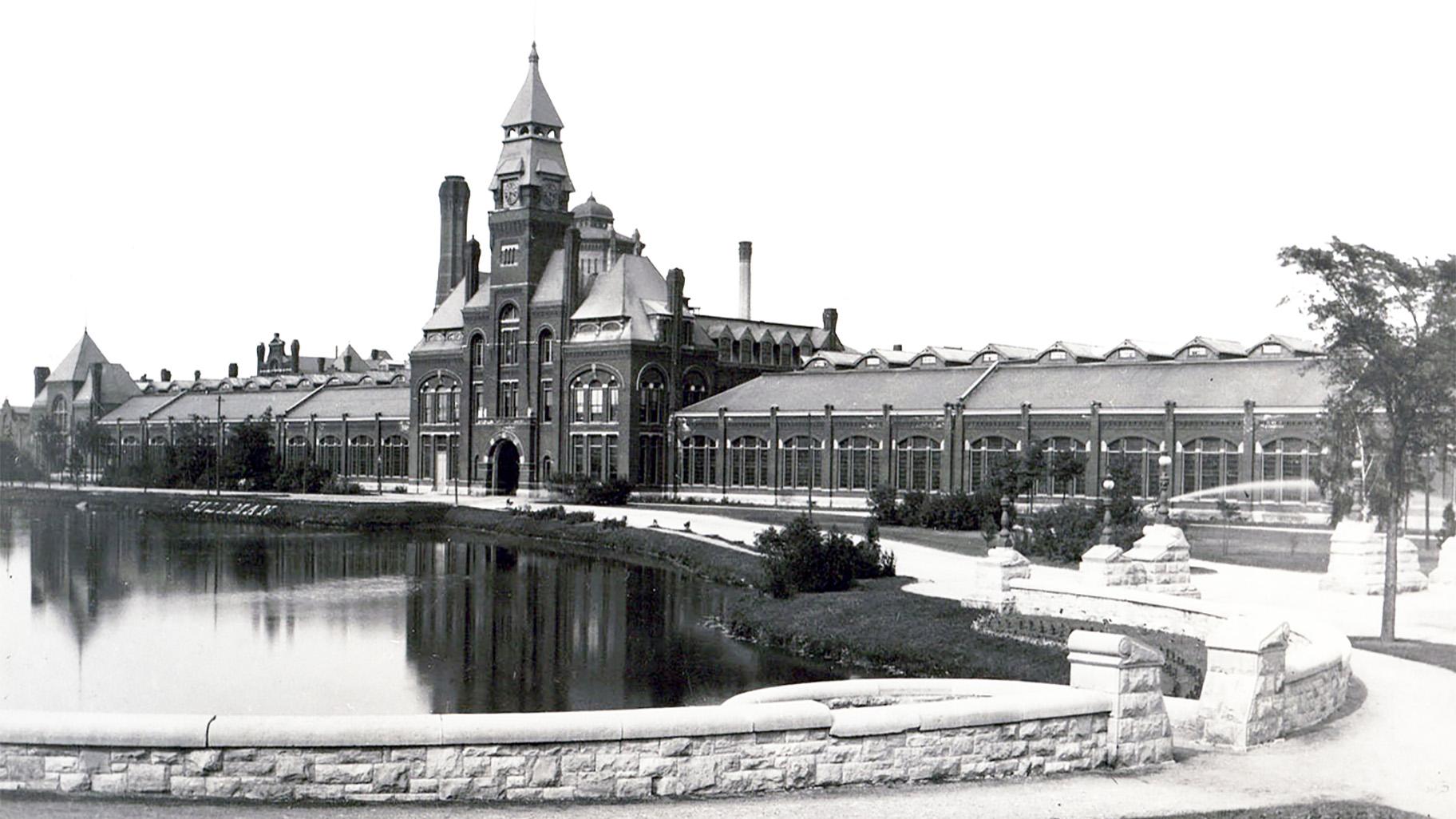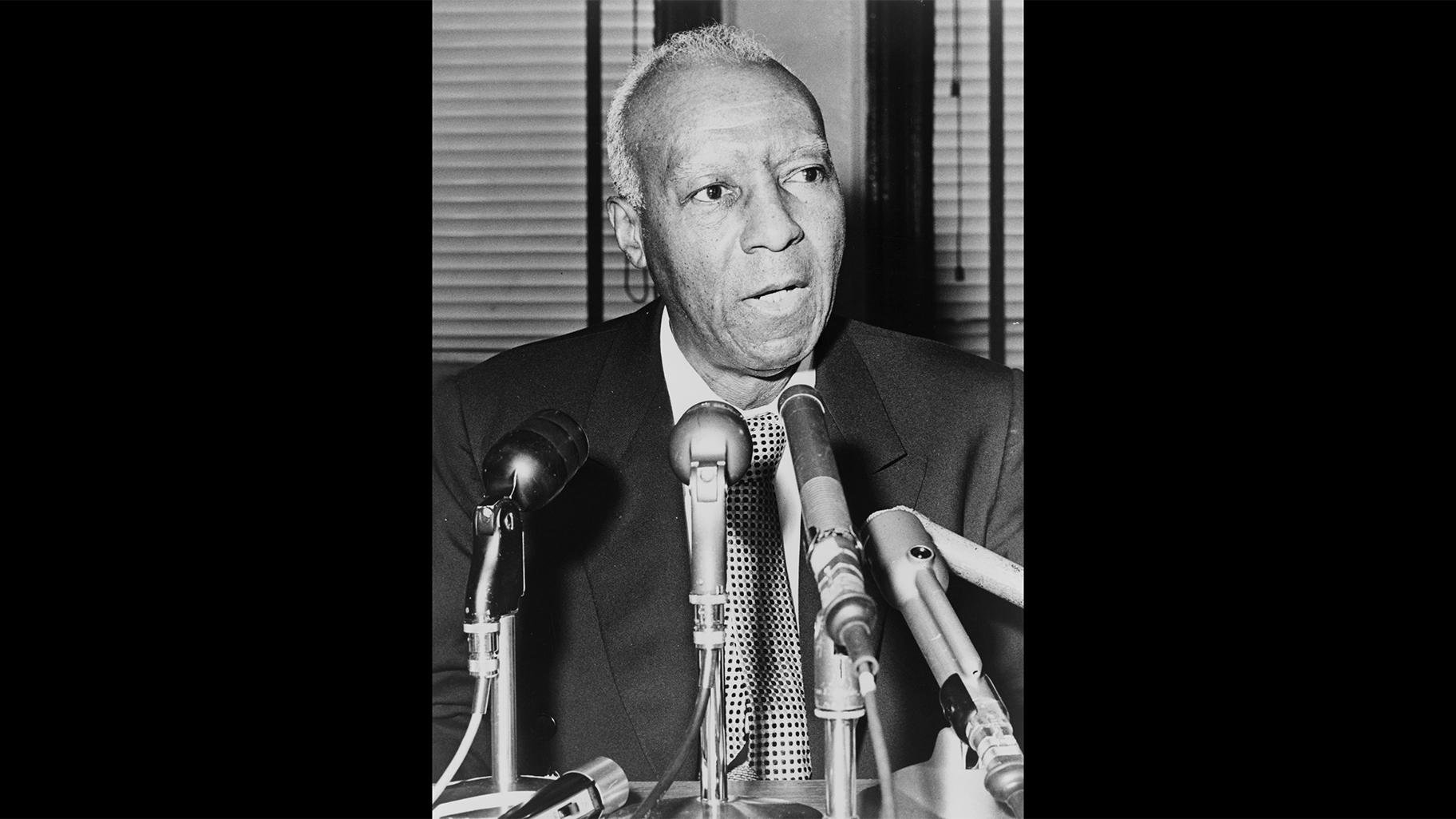Where Might Pullman Community Happen Again
Some people say that walking through Chicago'due south Pullman neighborhood is like traveling back in time.
On Labor Twenty-four hour period weekend, a new visitor centre in the old clock belfry administration building volition open up and debut an exhibit exploring the pivotal role the community played in American history.
"This is America's first planned industrial community and so there's a lot to be learned here," said Teri Gage, superintendent of Pullman National Monument.
6 years ago, President Barack Obama declared the Pullman neighborhood a national monument for its historic significance.
George Pullman, a 19th century industrialist, revolutionized rail travel with his Pullman Palace Auto, making what used to be a dreadful transportation feel a luxurious i. As Pullman's business grew, he opened a factory south of Chicago. Next to the factory, Pullman built a visitor town, which he named for himself. Pullman envisioned it to be a workers' utopia.
"Hither you take indoor plumbing, trash pickup, everything a customs should take, merely built for the worker," said Lee Bey, an architecture critic who lives in Pullman.
 As George Pullman's business grew, he opened a factory south of Chicago. Next to the manufactory, Pullman congenital a visitor town, which he named for himself. (Courtesy Pullman National Monument)
As George Pullman's business grew, he opened a factory south of Chicago. Next to the manufactory, Pullman congenital a visitor town, which he named for himself. (Courtesy Pullman National Monument)
The town had all the amenities about working people could only dream of — beautiful architecture, manicured landscaping and parks, a library, church and theater — all owned and controlled by the Pullman Company. Workers and managers paid rent to Pullman for their homes.
The clock tower administration building was the epicenter of the factory and company town, which is where the Pullman National Monument Visitor Center and Pullman Land Historic Site Factory Grounds will open up on Labor Day weekend.
The exhibit inside, which includes a nearly full-sized model of the Pullman sleeper motorcar, explores Pullman the human being, the company and the town, and too Pullman's important — and unintended — function in American ceremonious rights and labor movements.
 The clock tower administration building was the epicenter of the factory and company boondocks, which is where the Pullman National Monument Visitor Heart and Pullman Country Historic Site Manufacturing plant Grounds will open on Labor Day weekend. (Courtesy Pullman National Monument)
The clock tower administration building was the epicenter of the factory and company boondocks, which is where the Pullman National Monument Visitor Heart and Pullman Country Historic Site Manufacturing plant Grounds will open on Labor Day weekend. (Courtesy Pullman National Monument)
"When the economic recession started in 1894 and the orders dropped for the Pullman Cars, he reduced their hours, he reduced their wages, just he refused to reduce their rent," Cuff said.
Some workers barely had plenty to feed their families. Pullman employees walked out and the conflict speedily escalated into a national railroad boycott. President Grover Cleveland sent federal troops to break the strike, resulting in one of the most violent labor conflicts in American history.
"At the fourth dimension, the railroads in the United states of america were not trying to arbitrate or negotiate with employees," said Sue Bennett, banana superintendent at the Pullman National Monument. "So in hindsight, perchance he (Pullman) would take (negotiated)."
In the aftermath of the strike, Pullman's company was forced to sell off the town, which was afterward annexed to Chicago, and Cleveland fabricated Labor Mean solar day a national vacation.
"Perchance a bit of an appeasement for the workers because the strike did not immediately result in the kind of labor changes that they had hoped for," Gage said.
Civil Rights History in Pullman
Black history is an important part of the story in Pullman, as well. The company hired formerly enslaved people as Pullman Porters who carried passengers' luggage, served their meals and even shined their shoes.
"On one stop it could be looked at as a terrible job, on the other end it could be looked at equally a footstool of cocky-evolution, for carving out the center course," said David Peterson Jr., president and executive managing director of the National A. Philip Randolph Pullman Porter Museum.
Porters worked upwards to xx hours per shift, mostly just for tips, and had to sleep on seats in the smoking machine. They faced prejudice and racism from passengers who called them "George" after Mr. Pullman himself — harkening back to an old slavery practice.
"Imagine your proper noun's Tom and somebody disrespectfully calls you George," Peterson said. "You might besides only say, 'Hey boy, come hither.'"
Just existence a porter also had unexpected benefits.
"They had an opportunity to be amongst very, very prestigious businessmen, they had the opportunity to eavesdrop on these conversations well-nigh how they were running their businesses," Peterson said. "Through osmosis they had an opportunity to take that proof of concept back to their communities and kickoff businesses."
The Pullman Porters also quietly distributed Black newspapers like the Chicago Defender and Pittsburgh Courier across the American south, spreading the discussion almost opportunities in the northward.
"They were the unofficial ushers of the Great Migration," Peterson said.
About iii decades later on the Pullman strike and the decease of George Pullman, the porters overcame potent company resistance to form America'due south first major marriage of Blackness workers — the Alliance of Sleeping Car Porters, led by A. Philip Randolph.
 Almost three decades after the Pullman strike and the death of George Pullman, the porters overcame strong company resistance to form America's first major union of Black workers — the Brotherhood of Sleeping Car Porters, led by A. Philip Randolph. (Courtesy Pullman National Monument)
Almost three decades after the Pullman strike and the death of George Pullman, the porters overcame strong company resistance to form America's first major union of Black workers — the Brotherhood of Sleeping Car Porters, led by A. Philip Randolph. (Courtesy Pullman National Monument)
Pullman closed its manufacturing plant in the historic town in 1958, moving to another location in the urban center.
Revitalizing Pullman
Like many other communities on Chicago'due south South and West sides, Pullman has since faced pregnant disinvestment over the last several decades.
Buildings from the late 19th century deteriorated, and a fire devastated the administration building in 1998. But all forth, neighbors and local nonprofits fought to preserve Pullman and its history. The state rebuilt the clock tower in 2005. Ten years later, Obama declared it a national monument.
"Not a week goes by where in that location's not a headline where I hear a part of the story today harken back to issues of race, immigration, labor, capitalism, government regulation, gender equity, yous proper noun it we're still in the center of that story," Bennett said.
In recent years, companies like Method, Whole Foods and Amazon have come up to the area.
"In just a few short years nosotros take accomplished a lot, just nosotros still take a long way to go," said Ald. Anthony Beale (ninth Ward).
Some leaders say the community, in one case thought to be a model for company towns, may at present be a model for revitalization — with tourists equally a driving force.
"We're going to give them some place to shop, we're going to requite them some place to sleep, we're going to give them some place to consume and we're going to go on those taxation dollars flowing correct here in the community," Beale said
Preservation, restoration and development efforts are far from over, Beale said, all through the combined efforts of nonprofit customs developer Chicago Neighborhood Initiatives, philanthropic organizations like the Historic Pullman Foundation, and city, state and federal agencies. While the National Park Service operates the visitor centre, many other agencies operate the grounds effectually it and other parts of the neighborhood.
The Pullman Artspace Lofts opened this spring equally affordable housing in restored buildings from the original visitor town, and the restoration of 35 vacant Pullman row houses is underway.
"To be able to come across an surface area like this, be able to rebound, come back through tourism non through some kind of quick fix method, tourism and history is an important thing … And I really think this is a blueprint for what you tin can practice for other areas of the S Side, said Bey, writer of "Southern Exposure: The Disregarded Compages of Chicago's Southward Side."
Source: https://news.wttw.com/2021/08/25/look-pullman-national-monument-ahead-its-labor-day-weekend-opening
0 Response to "Where Might Pullman Community Happen Again"
Postar um comentário